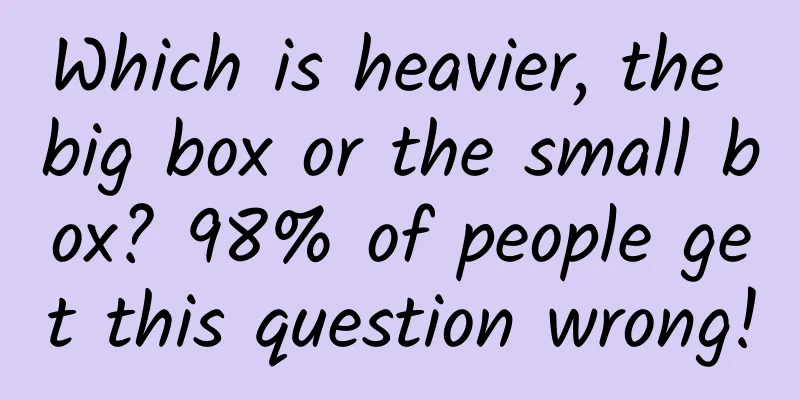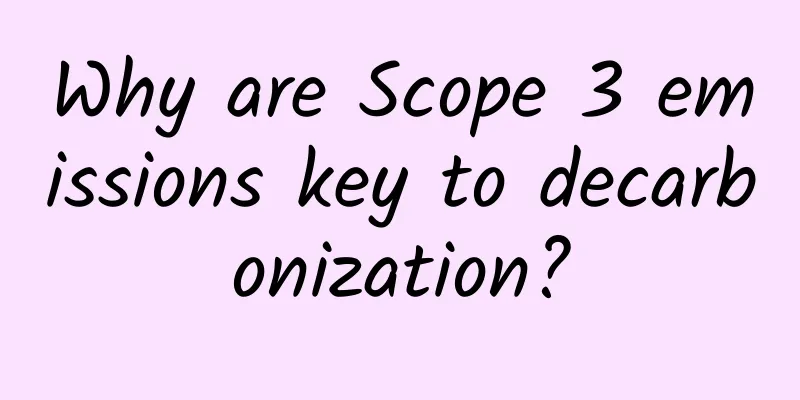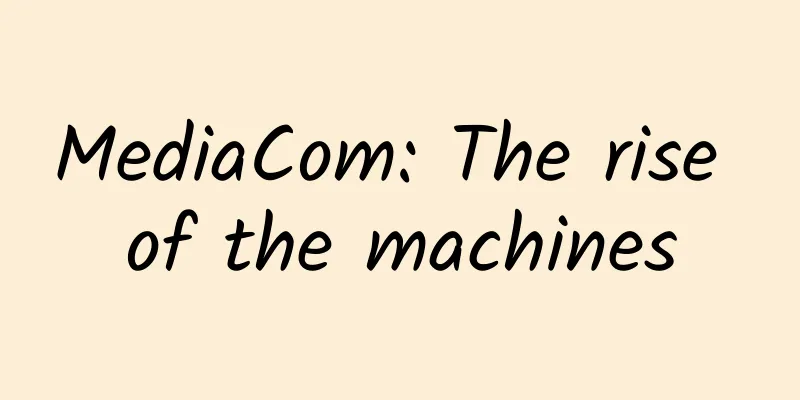Which is heavier, the big box or the small box? 98% of people get this question wrong!

|
You may have seen many amazing optical illusions, but it's not just your eyes that can be fooled - your hands can also be easily fooled. Here are four tactile illusions that you can perform at home. Stretch out your hands and experience them for yourself! Lipstick thinning Find a lipstick (or a smooth cylindrical object of similar size) and pinch the middle part with the index finger and thumb of your left hand (avoid the seam where the lid meets the lid). Next, pinch the two ends of the lipstick with the index finger and thumb of your right hand and rotate the lipstick back and forth. Close your eyes and feel the lipstick spinning between your fingers. At this point, you will feel that the lipstick is no longer a uniform cylinder, but has become an hourglass shape: the part pinched by your left hand seems to be thinner than the surrounding area. Spin it and the lipstick turns into an "hourglass" | Illustration by the author The illusion, called the spinning hourglass illusion, increases in intensity over time, reaching maximum intensity at around 25-35 seconds. If you open your eyes and stare at the cylinder in your hand, the illusion is much weaker. This illusion is believed to be related to the adaptation mechanism of touch. People's perception of local pressure comes from the tactile signals generated by tissue deformation. If the tissue deforms slowly, it will gradually adapt, causing the perceived pressure to decrease. When the cylinder is rotated, the deformation of the finger tissue at the axis of rotation is the smallest, while the deformation on the outside is larger. Therefore, the fingers have a difference in tactile perception adaptation. The subjective pressure at the axis position is reduced, so the brain thinks it is thinner here. Which box is heavier? Prepare two paper boxes of the same material but different sizes, and put the same type and quantity of small heavy objects (such as coins) in each. At this point, the weight of the two boxes should be roughly the same, and considering the weight of the paper boxes themselves, the smaller box should be slightly lighter. If you pick up two boxes and weigh them separately, which one do you think is heavier? Contrary to reality, most people will feel that the smaller box is heavier. The greater the difference in size between the two boxes, the more obvious this illusion is. Can't find a suitable box? You can also fold it yourself | Photo by the author This phenomenon is called the "size-weight illusion": when two objects of equal mass but different sizes are presented, people always seem to perceive the smaller object as heavier. In addition to size, the material and color of an object also affect people's perception of its weight. There are many theoretical explanations for this illusion, and its exact mechanism is still unclear. One view is that this illusion occurs because people first have a wrong expectation of the weight of the object. Another view is that the key is that the human brain's perception of the weight of an object is not the weight itself, but a comprehensive judgment based on factors such as density. Concave and convex illusion Even though the surface is flat and of the same height, your fingers can feel the bumps and depressions? You can experience this wonderful illusion by using a few sticky notes. We need to use the sticky back of the Post-it Note. Cut the sticky area of two Post-it Notes, and then cut a 3mm wide strip from the sticky part of the third. Now we have three strips, two wide and one narrow, all with sticky sides. Next, put double-sided tape on a piece of cardboard and stick the three strips side by side on it: the two wide strips sticky side up on the sides, and the narrow strip sticky side down in the middle. Try to keep the strips close to each other and without overlapping (see the picture below). Using sticky notes to create the illusion of bumpy texture | Illustration by the author The thickness of the paper strips facing up and down is the same. If you put them close together, theoretically, your finger should feel flat. If you press your finger on it and don't move it, you will only feel a flat surface. However, if you gently stroke up and down along the narrow strip in the middle, you will have a different tactile feeling: compared with the two sides, the non-sticky part in the middle seems to sink a little and become a groove. The above device can also be reversed: this time, the narrow middle sticky strip faces upwards, while the wide surrounding sticky strips face downwards. Gently touch it, and this time the narrow sticky strip in the middle feels like it is bulging. This illusion occurs because people's perception of the roughness and shape of an object's surface is related. The original signals of these two perceptions come from the same source, which is the tactile sensation produced by the deformation of local skin tissue. The tactile system transmits simplified skin deformation information to the brain, which is responsible for making judgments on the shape and texture of the object. When the perceptual information is vague, the brain seems to have a more inclined interpretation method, such as first interpreting the tactile differences in different areas as shape differences rather than texture differences. The Comb Illusion Hold a plastic comb between your left index finger and thumb, and press your index finger on the teeth. Use your other hand to hold a pen (or chopsticks) and gently move the teeth left and right. At this time, the finger pressing on the teeth will clearly feel a small bump on the teeth, which will slide left and right as the teeth are moved. Similar to other tactile illusions, the illusion is more obvious when you close your eyes or look away. Why are the teeth of the comb raised? | Illustration by the author In theory, the comb teeth only move horizontally, causing the finger skin to be stretched and deformed horizontally, without actually producing a bulge, but people will have the tactile sensation that the object is bulging upwards. Similar to the bump illusion of sticky notes, here, the skin deformation information is interpreted by the tactile system as a shape change. References [1] http://www.scholarpedia.org/article/Tactile_illusions [2] http://www.cim.mcgill.ca/~haptic/pub/VH-BRB-08.pdf [3] https://link.springer.com/article/10.3758/s13423-019-01604-x [4] http://psychsciencenotes.blogspot.com/2011/02/size-weight-illusion-is-functional-and.html [5] https://ieeexplore.ieee.org/document/5710913 Author: Window Knocking Rain Editor: Luna |
>>: What is the end of the universe, destruction or eternal life?
Recommend
Dizziness "first reaction": Is it Meniere's?
For many friends who suddenly feel dizzy, their f...
Why do people dream?
Dreaming is one of the most wonderful experiences...
Basic knowledge of POS machines, understand POS machine knowledge
The POS machine used always jumps code, which caus...
Coach Fanfan corrects O-shaped legs and straightens calves
Coach Fan Fan's O-shaped legs correction and ...
Microsoft shows off its weird Silent Voice technology
Microsoft is working on a new voice input interfa...
A man was detained for killing the "sacred bird of the plateau". What is the significance of protecting black-necked cranes?
In December 2023, there was such a sad and infuri...
The best 5-step user behavior path!
The market is becoming increasingly calm, and the...
U.S. court rules Qualcomm must license patents to rivals
Foreign media reported that a U.S. federal judge ...
The Gatekeeper of Light: How Polarized Lenses Tame Glare
Imagine that you are a little detective with a pa...
3 Tips for Writing an Event Planning Proposal
Let’s talk about planning and writing plans today...
13 case studies teach you 3 tricks to achieve 0-budget planning of a million-PV event
In a startup company, both personnel and support ...
The 237th issue of "Trading Sense Training Camp"
Resource introduction of the 237th issue of "...
Strategies for creating 10w+ article titles for new media operations!
A title that cannot be understood in one second i...
Lang Xianping: LeEco and Internet companies cannot succeed in making cars
Lang Xianping, a well-known "Internet celebr...
My phone is connected to Wi-Fi 24 hours a day, but why is the data usage still running out?
It is undeniable that with the continuous develop...



![[Tutorial] How did a 16-year-old hacker install Windows 95 on a smartwatch?](/upload/images/67ebf241e6ef7.webp)





